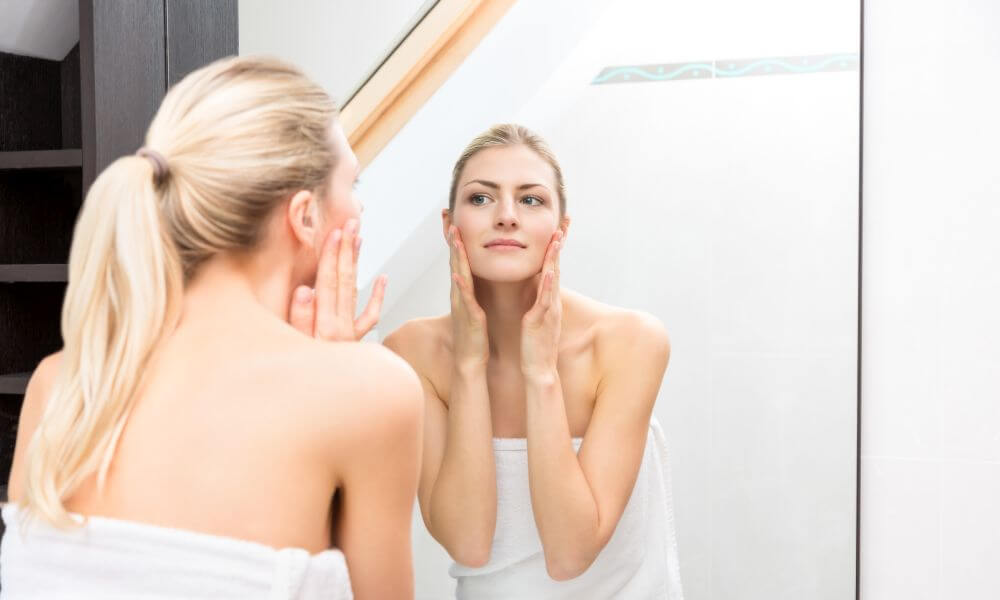Want to know how to get rid of your oily skin? Here are the real reasons for it and what you can do to fix them.
How to get rid of oily skin.
Best moisturizer for oily skin.
Best face wash for oily skin.
Best toner for oily skin.
Best face mask for oily skin.
Oily skin is an annoying menace. The shine it gives your skin is enough to want to get rid of it. But it also leads to blocked pores, acne, and blackheads.
There can be a few reasons for oily skin, and most of them have more to do with what's going on inside your body. Keep reading and you'll learn your underlying cause for oily skin, how to fix it, and want products can help speed up the process.
Here's how to get rid of oily skin for good!
What Causes Oily Skin?

To put it simply, oily skin is caused by hyperactive sebaceous glands. While they are found all throughout your body (with the exception of the soles of your hands, lips, and bottoms of your feet), sebaceous glands are most active in the T-zone on your face as well as your back and chest.
Though annoying in excess, sebum has a protective role, preventing water loss, providing moisture and protecting against free radicals.
What causes these glands to over excrete is different from one person to the next. The key to getting rid of oily skin is identifying your unique cause and addressing it at its root.
While genes play a role in oily skin, it’s the lifestyle factors and everyday choices that really ramp up oil production.
1. pH Imbalance
Let’s talk pH first because many of the factors we’ll discuss below circle back to a problem with pH.
If you remember from science class, the pH scale ranges from 0 to 14 with 0 being acidic, 7 being neutral and 14 being alkaline.
In its best condition, skin is slightly acidic with a pH hovering around 5. This is the perfect environment for your skin’s acid mantle, otherwise known as its built-in defense system. It protects against dirt and pollution while also regulating oil production.
If this natural skin barrier is damaged, oil production can go haywire.
2. Hormones
Around puberty, the size of your sebaceous gland increases and produces more sebum between the ages of 15 and 35. Interestingly enough, sebaceous glands have receptors, and these receptors are greatly influenced by sex hormones, especially androgens.
The more hormones that bind to these receptors, the more oil that is produced.
That’s why, if you’re female at least, oily skin is most problematic just before and during your monthly cycle.
Estrogen affects skin texture and balance of fluids, and higher levels of progesterone (a hormone that plays an important role in your cycle) result in higher levels of sebum.
3. Chemicals and Toxins
We’ve all used hair and skincare products for most of our lives, but I daresay most of us haven’t paid much attention to ingredient labels. Unfortunately, most products are loaded with harsh chemicals that damage our skin over time, disrupting its delicate pH.
Besides, every toxin absorbed through the skin has to be eliminated, and the liver plays a major role in that. When it gets congested with toxins, its other functions like breaking down fat suffer, leaving it circulating through the bloodstream.
That fat then gets picked up by your sebaceous glands, thickening the oil that it secretes, which makes skin appear far more oily.
4. Diet
Healthy skin starts from the inside out and is directly linked to the state of your gut. Inflammatory foods like refined carbohydrates, hydrogenated vegetable oils, processed meats and conventional dairy can result in oily skin, acne and more.
Sugary foods like baked goods, candy, cereals and sodas spike your blood sugar, which signals your body to produce more insulin. When insulin ramps up, oil secretion increases as well.
5. Stress
Stress causes cortisol (the body’s primary stress hormone) to rise. As cortisol levels increase, it triggers your sebaceous glands to produce more oil. Research has even shown that stress has a physical effect on skin’s natural barrier, causing water loss and an inability to repair itself.
Other lifestyle factors like how often you wash your face, certain medications and being dehydrated can affect oil production as well, but these are the most common causes of oily skin.
How to Get Rid of Oily Skin

Though tempting, oily skin shouldn’t be treated at surface level or simply be covered up. To truly regulate excess oil production, you need to identify its cause from the list above, then make some changes.
Here are a few ideas:
If it’s a pH issue: Skincare products that are either too alkaline or too acidic throw your pH balance out of whack. You can prevent that from happening by opting for pH-balanced products. The vast majority of products are formulated to be alkaline, especially bar soaps, so avoid those.
If hormones are the problem: Just before and during your period when hormones fluctuate the most, try to clean your face twice a day to clear any excess oil. Other than that, balancing hormones involves a mixture of clean diet, exercise, avoiding hormone-fed beef and dairy, fostering gut health and more.
If diet is to blame: Cut out the inflammatory foods discussed previously, opt for dairy-free alternatives like almond milk and healthy alternatives to refined flour products that spike blood sugar levels. Some good options include quinoa and brown rice. Focus on whole foods, fruits and vegetables.
Be sure to stay well hydrated, which is essential for proper skin function as well as optimal liver and kidney function (so they can filter out toxins more efficiently). You may also want to consider reversing nutrient deficiencies with proper supplementation. Some of the most important skin-nourishing nutrients include vitamins A, B6, E and C as well as omega-3 fatty acids.
If chemicals and toxins are wreaking havoc: Get all of your skincare products and throw out everything with ingredients that’ll damage your pH and acid mantle. Some of the most common toxins include:
- Phthalates
- Formaldehyde-releasing preservatives
- PEGs
- Harmful sulfates (SLS and SLES)
- Parabens
- Petroleum
If stress is the cause: It goes without saying, but you need to find a way to lower your stress levels. This might involve avoiding caffeine, taking warm epsom salt baths, getting at least 8 hours of sleep per night and minimizing your to do list.
While balancing things on the inside is critical, there are definitely some steps you can take on the outside to finally eliminate oily skin. Let’s look at a few.
Best Moisturizer for Oily Skin
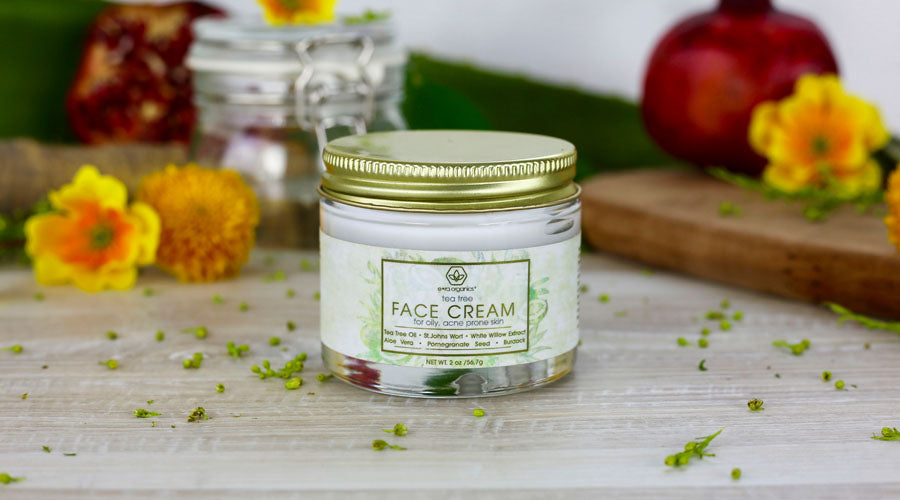
A lot of people with oily skin think they should avoid moisturizers completely, but that’s not the case. You just have to make sure to use the right kind that won’t trap oil in pores.
By not using moisturizer, you run the risk of your skin drying out, which will stimulate even more oil production.
A 2014 study showed that aloe vera is excellent for oily and acne-prone skin as it contains compounds that naturally soothe skin without over-moisturizing it.
Moisturizers like our non-comedogenic Tea Tree Face Cream features aloe vera for this very reason. In addition to aloe vera, it uses plant-based ingredients like tea tree oil, goldenseal, St. John’s Wort and pomegranate seed oil to nourish and hydrate oily skin while balancing skin oils and cleansing pores.
Best Face Wash for Oily Skin
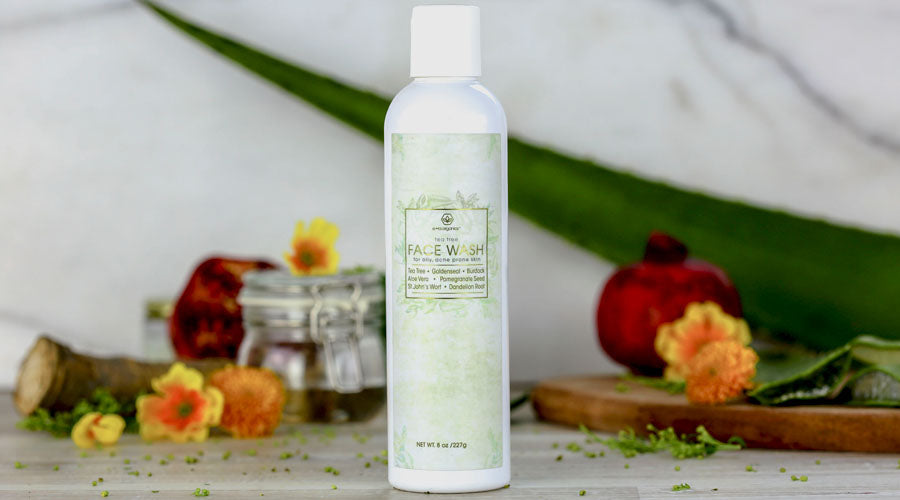
Regular washing can reduce oil in the skin, but you need to stick to a gentle face wash like our Tea Tree Cleanser that won’t strip it completely. It works to nourish skin at its base and balance oils, helping shed dead skin cells, cleanse pores and balance your pH.
Our cleanser is able to clean and remove excess oil gently with the help of botanical ingredients like tea tree, salicylic acid, dandelion root, coconut oil and more.
Even with a gentle cleanser, there are a few steps to keep in mind as you wash your face:
- Use lukewarm water
- Avoid rough washcloths and loofahs
- Gently pat dry (no rubbing - too much friction stimulates oil production)
Best Toner for Oily Skin
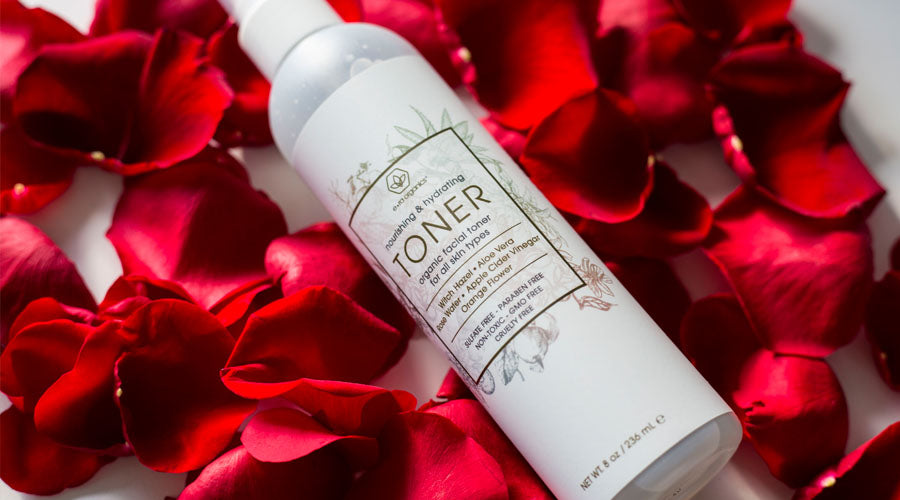
Toners are perfect for oily skin because they seep deeper into pores and slow oil production without stopping it completely.
Look for toners that use plant-based astringents instead of relying on alcohol, which can dry out the skin too much.
Witch hazel is one such astringent that doubles as a potent anti-inflammatory agent, which is a great combination for oily skin. The Era Organics Face Toner utilizes not only witch hazel but rose water and apple cider vinegar as well to preserve your pH and tighten and tone without sulfates, harsh chemicals or parabens.
Best Face Mask for Oily Skin
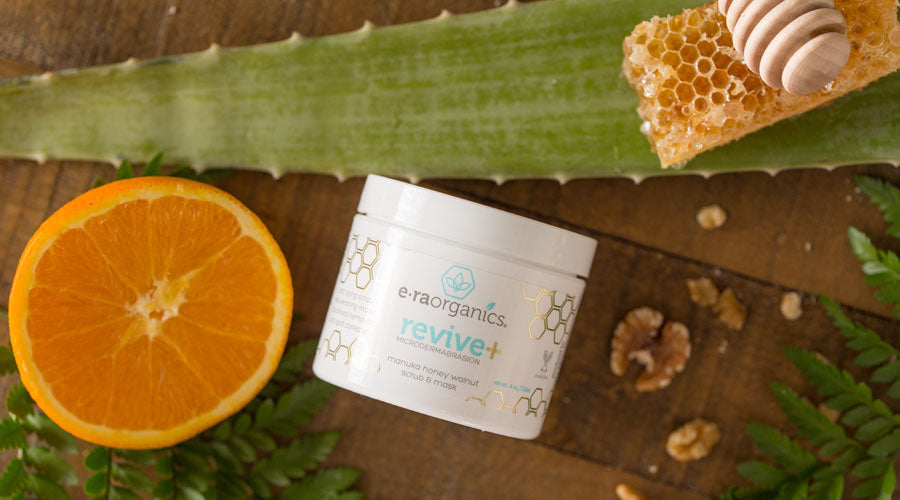
Face masks are particularly effective for oily skin because they absorb excess oil without compromising hydration. They also provide a soothing deep clean to get rid of dead skin cells and prevent the breakouts that often accompany oily skin.
As a result, face masks gently exfoliate for reduced acne and minimized pores. Our Revive Face Scrub is able to do this and more through the use of manuka honey for cellular regeneration and free radical protection, along with soothing aloe vera, orange oil and walnut shells.
Summary
Getting rid of oily skin can be a game of trial and error to discover its root cause. Once that cause is discovered, however, you can use the tips provided in this article to finally achieve the complexion you crave.
Whether the cause is diet, pH imbalance, hormones, toxins or stress, there are a few key products you can use to slow the rate of oil production while you work on its source. These include a quality face cleanser, toner, moisturizer and face mask.
At Era Organics, we have specially formulated products aimed at regulating oily skin through the power of nature. View our complete collection for oily skin here!

